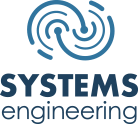As CMMC (Cybersecurity Maturity Model Certification) edges closer to becoming a contract requirement across the board, many defense contractors are still wrestling with a foundational question: What will CMMC compliance really cost us? And perhaps more importantly—how do we budget for it effectively when there's still so much uncertainty?
The answer, unfortunately, is: It depends. But that doesn't mean organizations are powerless. The key is to build a flexible budgeting framework that considers both the direct and indirect costs of achieving (and maintaining) compliance.
Budgeting for CMMC: The Known Unknowns
When it comes to CMMC, most businesses are asking: "What's this going to cost us, and when do we need to be ready?"
The challenge? CMMC is not a one-time project—it's a continuous improvement process that doesn't end at the assessment. Costs vary based on several factors including:
- Current cybersecurity maturity level: If you're starting from scratch (with limited cybersecurity in place—think ‘just a firewall, anti-virus, and some basic security policies’), expect higher upfront costs. Organizations without defined policies, MFA, endpoint protection, or network segmentation will require more time and money to close gaps and meet NIST 800-171 requirements.
- Internal IT capabilities: In-house teams may be able to handle some tasks, like documentation or patching. But CMMC requires security expertise, compliance experience, and a clear understanding of federal frameworks—most organizations will need help, especially since IT resources still have a ‘day job'.
- Handling of CUI (Controlled Unclassified Information): If your business touches CUI, your compliance bar is higher with Level 2. You'll need to define where that data lives, how it moves through your systems, and implement strict protections around access, sharing and storage.
- Network and supply chain complexity and integration: The more applications, users, third-party relationships, and integrations you have, the more complex compliance becomes. Every integration, shadow IT tool, or addition of external vendors could create new vulnerabilities that must be addressed.
- Architecture choice (enclave vs. enterprise): Your decision to isolate compliance inside a secure enclave—or extend it across the business—directly affects how many systems, endpoints, and users are in scope, which greatly influences cost and implementation time.
What Makes Up the True Cost?
CMMC compliance costs aren't just about passing (and paying for) an assessment. They're about building and maintaining a secure, resilient, and compliant business environment. Here's the breakdown:
READINESS ASSESSMENT
A readiness assessment gives you a baseline of where you are in relation to the 110 NIST 800-171 controls. It includes identifying where CUI lives, evaluating your current policies and tech stack, and producing an SPRS (Supplier Performance Risk System) score. This is the foundation for budgeting and planning.
REMEDIATION PROJECTS
Most companies will discover gaps that require technical fixes: upgrading firewalls, implementing multifactor authentication, isolating networks, or replacing outdated servers. Many organizations will have to deal with older, legacy systems. These projects are essential to meeting CMMC’s technical controls and can be some of the most expensive line items.
DOCUMENTATION
Compliance is documentation-heavy. You'll need a formal System Security Plan (SSP), documented procedures, incident response plans, training logs, and a POA&M (Plan of Action and Milestones) outlining how you’ll address gaps. Many organizations underestimate the time and effort required to produce compliant documentation. Remember, you will have to demonstrate adherence to these documented policies – not just supply a piece of paper.
TOOLING & LICENSING
You'll need to invest in security tools like endpoint detection and response (EDR), vulnerability scanning, centralized logging (SIEM), encrypted backup, and monitoring. Licensing costs vary widely, but these tools are foundational to achieving and maintaining compliance.
TRAINING & AWARENESS
Users must be trained regularly on topics like phishing, acceptable use, and secure handling of CUI. Technical staff may require more specialized training to manage compliance-related tools and procedures. CMMC also expects that training is documented and ongoing—not a one-time event.
ONGOING COMPLIANCE SUPPORT
Compliance doesn't stop after the assessment. You'll need ongoing monitoring, vulnerability management, patching, and advisory check-ins. This is especially critical as threats evolve and your business changes (e.g., new hires, software, vendors, or mergers). Adherence shouldn't ‘lapse’ after the assessment – you'll be repeating the same assessment in 3 years.
ENCLAVE vs. ENTERPRISE APPROACH
Architecture plays a major role in both the cost and operational impact of compliance. Gaining clarity on this strategy early on can actually minimize costs and ensure your business operates more smoothly and efficiently.
ENTERPRISE
This approach brings your entire organization into scope. It involves implementing CMMC controls across all departments, systems, and users—essentially treating every part of the organization as if it touches CUI. While this can simplify operations in some environments, it's often more expensive and difficult to maintain over time.
ENCLAVE
With an enclave approach, you isolate your CUI-related operations into a secure 'bubble'—a separate domain, network, or environment with strict controls. Only users who need to access CUI operate within the enclave. This reduces the compliance footprint, lowers costs, and speeds implementation. However, it requires careful planning to maintain productivity across both environments. Enclaves make compliance manageable—but only if they're designed for real-world use.
It is difficult to build a perfect budget from day one. Instead, use a phased, adaptable approach:
Threats change, tools improve, and staff turnover happens. Regularly revisiting your plan keeps costs aligned with reality—and helps avoid surprises before an assessment.







